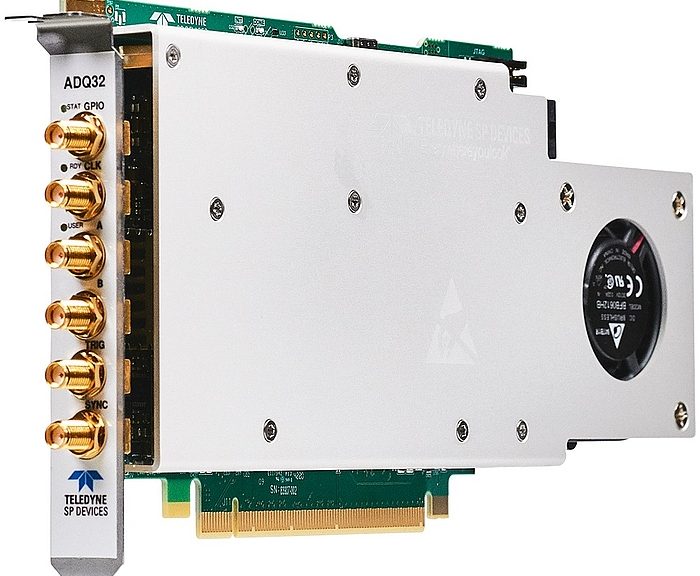- Teledyne SP Devices announced the launch of the ADQ32 signal digitizing card in PCI Express format optimized for high-speed data acquisition and processing applications.
- Its on-board FPGA processing and data transfer capabilities of up to 7 GB/s addresses this board with two analog inputs to computationally demanding applications.
The PCIe digitizer features two analog channels whose signals are synchronously sampled with 12-bit resolution at a rate of up to 2.5 GS/s per channel. It embeds a user-programmable Xilinx Ultrascale KU040 Kintex FPGA.
The ADQ32 board is designed to be integrated into a wide variety of equipment such as tomography, time-of-flight mass spectrometry and fiber optic distributed sensing systems.
Application-specific digital signal processing can be performed in real time by the on-board FPGA to characterize the signals and extract relevant information. It also allows the volume of data to be reduced to match the throughput of the PCIe Gen3 x8 interface, which can reach 7 GB/sec. The data can then be post-processed by the central processing unit of the host PC or transferred in peer-to-peer mode to a graphics processing unit (GPU).
This architecture allows the user to choose the most appropriate type of processing resource for a given operation and specific numerical processing (FFT, averaging, zero overpressure, etc.).
The ADQ32 signal acquisition board also has hardware trigger and internal/external clock synchronization capabilities and offers general purpose I/Os.
# Overview of ADQ32 Board Features :
- Two analog inputs
- Sampling rate : 2.5 GS/s per channel
- Supported data transfer to CPU or GPU : 7 GB/s
- Two external trigger channels
- Cross talk < 1 GHz : -70 dBFS
- Noise power density from 0 to 1.25 GHz : -148 dBFS/√Hz
- SNR: 55 dBc (260 MHz, -1dBFS)
- SFDR : 66 dBc ( 260 MHz, -1dBFS)
- Number of effective bits (ENOB full relative scale): 9 bits (10 MHz, -1dBFS), 8.9 bits (260 MHz, -1dBFS), 8.5 bits (810 MHz, -1dBFS)






